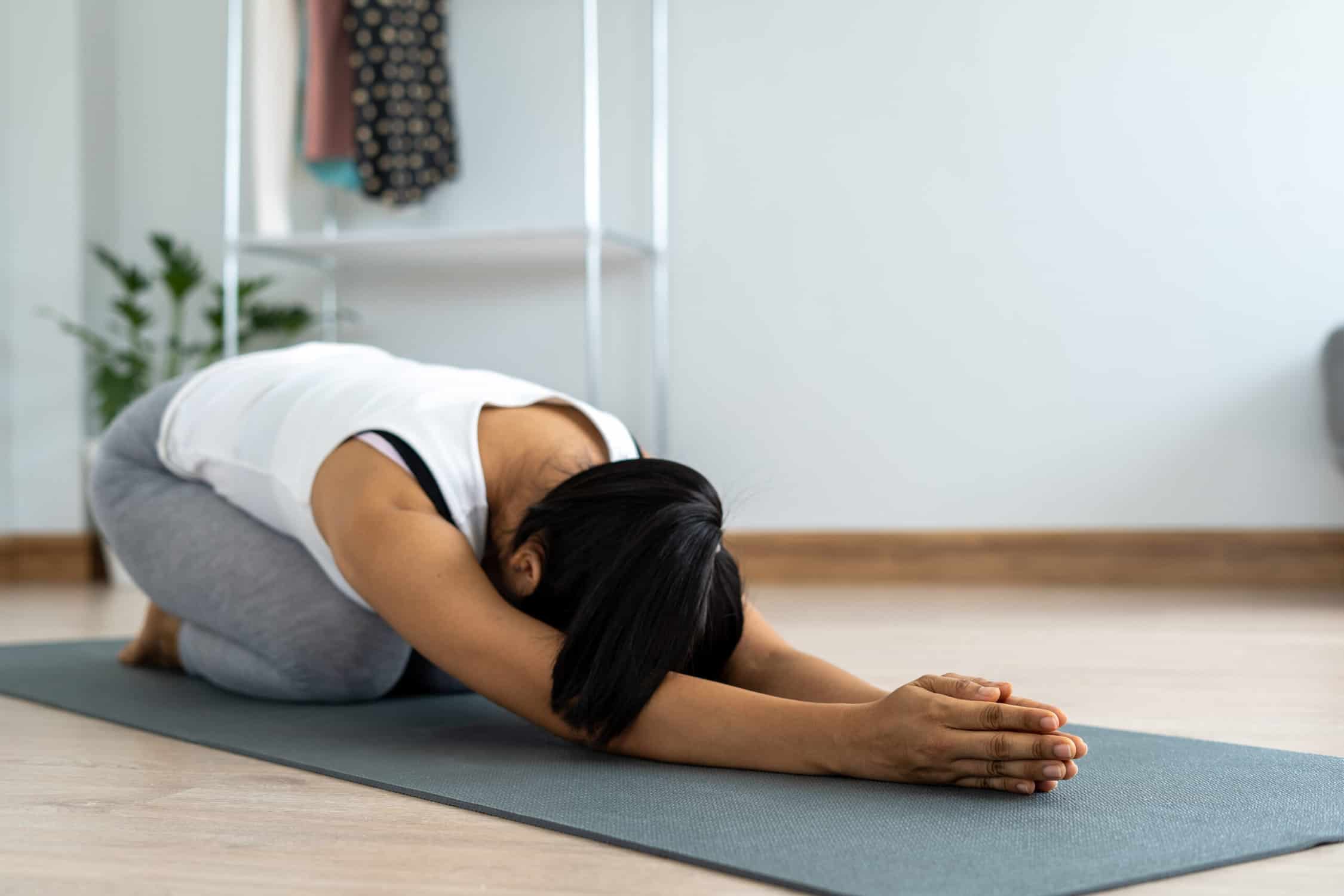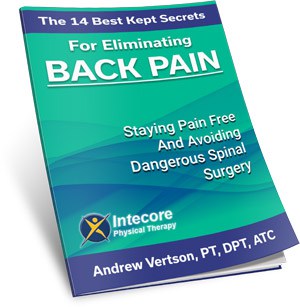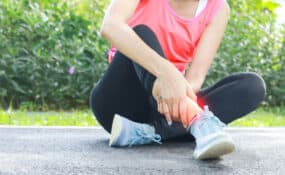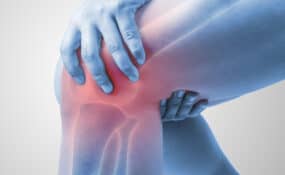
As the vibrant hues of fall foliage grace our yards, raking leaves becomes a common item on our to-do lists. But did you know that raking leaves can lead to unwanted back pain if not done correctly? I’ve encountered numerous cases at our clinics where improper techniques have led to strains and discomfort. That’s why I’m excited to share 3 essential back-saving tips to ensure that you’re equipped with the knowledge to do physical activities like raking leaves, safely. Let’s turn this seasonal chore into an opportunity for enjoyable, pain-free outdoor activity!
More Posts Like This From Intecore:
Is Exercising Making My Hip Pain Worse?
How To Reduce The Risk Of An Injury
Table of Contents
The Importance of Protecting Your Back When Raking Leaves
Engaging in the fall ritual of raking leaves can be a satisfying way to enjoy the crisp air and witness the changing of seasons. However, it’s important to approach this task with an awareness of the potential stress it can exert on your back. Each sweeping motion and the repeated bending can strain the muscles and ligaments, especially if done without proper technique.
Understanding The Risks
Overexertion and incorrect raking postures can lead to acute pain, muscle spasms, or even chronic issues over time. The repetitive twisting, turning, and bending motions, especially when done vigorously or for prolonged periods, can exacerbate the risk of injuries.
Furthermore, the inconsistency of movements, the varying weight of leaf piles, and the frequent shifting from raking to lifting can lead to muscle imbalances, which can feel like a strain on one side of the body, particularly affecting the lower back. It’s not uncommon for individuals to experience pain and stiffness hours or even days after the activity. The cool autumn weather, although refreshing, can sometimes make muscles more prone to stiffness, further elevating the risk.
Being aware of these potential risks is the first step in understanding the necessity of protecting your body while taking part in activities like raking leaves. In the upcoming sections, we’ll explore practical tips to help you do that.
Preventing Back Injuries
I advocate for practices that not only make raking leaves more manageable but also prioritize your well-being. Incorporating stretches, utilizing ergonomic tools, and adopting proper raking techniques are fundamental steps to safeguard your back. In the following sections, we will delve deeper into actionable tips, ensuring that your autumn leaf raking is a pain-free and enjoyable experience.
Warm-Up and Stretching Exercises

Before stepping out to conquer the fallen leaves, it’s important to prepare your body, much like you would for any other physical exercise. Ensuring your muscles are warmed up can significantly reduce the risk of strains and injuries. Let’s dive into some beneficial warm-up and stretching routines.
Gentle Warm-Up Routine
To get your blood flowing start with a gentle 5-10 minute warm-up. A brisk walk around your yard or up and down your street is great. Follow this with movements like shoulder rolls, neck rotations, and arm circles to loosen the upper body. Don’t forget the lower body – ankle rolls, and gentle knee bends can prepare your legs for the bending and lifting involved in raking leaves.
Effective Stretches for the Back
Once warmed up, focusing on specific stretches for the back to help prepare it for raking leaves:
- Cat-Cow Stretch: On your hands and knees, arch your back up, tucking your chin to your chest, then dip your back down and lift your head up. It’s a great dynamic stretch for the entire back.
- Child’s Pose: This pose is excellent for stretching the lower back. Kneel on the ground, sit back onto your heels, and reach your arms forward on the ground, holding for 20-30 seconds. You should feel a gentle stretch in the lower back.
- Torso Twists: Standing or sitting, twist your torso to one side, hold for a few seconds, and then twist to the other side. This helps in loosening the mid and upper back.
Remember, each stretch should be held for about 15-30 seconds and shouldn’t cause pain—only a gentle pull.
These warm-ups not only prep your body for the physical task of raking leaves but can also transform the chore into a wholesome activity – the perfect light exercise for the autumn season.
Proper Raking Techniques
Choosing the Right Tools:
The tools you select are your first line of defense against unnecessary strain. Opt for a rake that aligns with your height and strength, ensuring comfort and efficiency and reducing the need for excessive bending to safeguard your back. Lightweight bags or bins to dispose of leaves can also aid in minimizing strain.
Stance and Posture
Maintain a stance that is stable and flexible. Keep your feet shoulder-width apart and your knees slightly bent. As you’re raking leaves, avoid the temptation to overreach; instead, walk as you rake to protect your back from overextension.
Techniques to Minimize Strain While Raking Leaves
To decrease the risk of back pain, use your arms more than your back. Try to switch your leading hand every so often to balance the workload on each side of the body. When collecting leaves bend at your knees instead of your waist.
Remember, listen to your body. If your start to feel a strain, take a break and take a moment to stretch and maybe even complete the task another day – your body knows best!
Rest and Recovery
As with any physical activity, taking adequate rest is essential as it plays a crucial role in preventing overexertion and injuries. Rest periods allow the muscles to recuperate, reducing the risk of strains and ensuring your back remains protected.
Signs of Overexertion and Injury
Being attuned to your body’s signals is key. Symptoms like an increased heart rate, excessive sweating, and muscle cramps should not be ignored. If pain or discomfort in the back is noticed, it’s crucial to stop.
Self-Care for a Healthy Back
Post-raking self-care can be as significant as the precautions taken during the activity. Consider applying a warm compress to the affected areas to relax the muscles, or if there’s noticeable inflammation, an ice pack can be effective. Also, add in some gentle stretches to aid recovery.
Remember to listen to your body. If back discomfort persists, seeking professional help is advised. Physical therapists are equipped with the skills and knowledge to alleviate pain, offer tailored exercises, and provide guidance on preventing future strains.
Ready to Experience the Benefits of Physical Therapy?
If you’ve read this far, it’s likely you’re eager to find lasting relief from back pain. The good news is, that physical therapy could be the powerful remedy you’ve been searching for.
To find out more, click here to fill out this form and tell us more about what’s going on, and our team will be in touch. You can also give us a call here: 949-565-4944
\If you’re not quite ready to talk to us yet, why not download our FREE back pain guide? It’s full of practical tips, insights, and strategies to ease back pain without the need of painkillers.
Download Your Free Back Pain Guide Here.

- Why Regular Body Maintenance is Crucial for Long-Term Health - April 21, 2024
- 3 Things Aggravate Knee Pain After Biking and How to Ease It - April 14, 2024
- Runners Knee Stretches: Top 5 Stretches Every Runner Needs to Know - April 7, 2024













